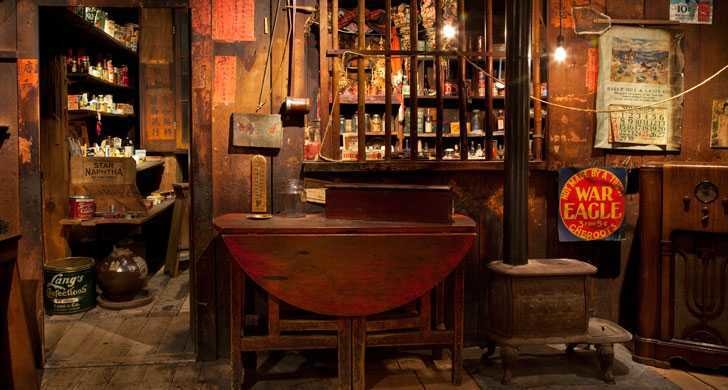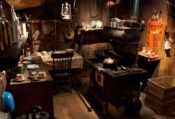Kam Wah Chung & Company is a time capsule of early Chinese medicine history and culture in the US, established during the gold mining days of the Wild West. The building, which stands today, was built in 1860 and was purchased in 1877 by Chinese immigrants, husband and wife, Ing Hay and Lung On. The building was their residence, a general store that purveyed Chinese medicines, and it served as a community center.
 Gold rush activity in 1862 generated an influx of Chinese immigrants to the region of Eastern Oregon. The Chinese population in the vicinity of John Day, Oregon was about 2,000, making it the third largest enclave of Chinese in the United States, only slightly smaller than those of Portland and San Francisco at that time.
Gold rush activity in 1862 generated an influx of Chinese immigrants to the region of Eastern Oregon. The Chinese population in the vicinity of John Day, Oregon was about 2,000, making it the third largest enclave of Chinese in the United States, only slightly smaller than those of Portland and San Francisco at that time.
 Both Ing Hay and Lung On operated Kam Wah Chung which filled the important niche of apothecary and doctor’s services. Patients would come from near and far to seek the care and traditional Chinese medicines that ‘Doc’ Hay stocked and prescribed. When Doc fell ill in 1948 the business closed its doors after more than 70 years. The stocked formulas and supplies in their apothecary have withstood time and happen to be ones we still commonly use today. The original site and its contents are preserved as a museum at 519 W. Main Street in John Day, Oregon, 97845.
Both Ing Hay and Lung On operated Kam Wah Chung which filled the important niche of apothecary and doctor’s services. Patients would come from near and far to seek the care and traditional Chinese medicines that ‘Doc’ Hay stocked and prescribed. When Doc fell ill in 1948 the business closed its doors after more than 70 years. The stocked formulas and supplies in their apothecary have withstood time and happen to be ones we still commonly use today. The original site and its contents are preserved as a museum at 519 W. Main Street in John Day, Oregon, 97845.

Take a 360 tour using this link
A precious piece of Chinese Medicine history
![]()



